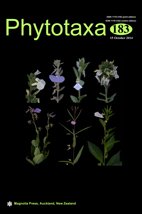Abstract
The Marambaia is an important natural refuge for preserving the genetic heritage of several rain forest plant species. In this insular region, where the vegetation types are Lower Montane Rain Forest and restingas (sandy coastal plain habitat), the impressive diversity of Melastomataceae consists of seven genera and 25 species of which 13 represent new records for the area. Miconia is best represented with 10 species, followed by Tibouchina (6 spp.), Leandra (4 spp.), Clidemia (2 spp.) and Huberia, Marcetia and Ossaea (1 sp. each). Most of the species are shrubs or trees and occur in Dense Submontane Ombrophilous Forest. Huberia ovalifolia DC., Leandra acutiflora (Naudin) Cogn. and Leandra melastomoides Raddi are cited in the list of endangered species for the municipality of Rio de Janeiro. An identification key is provided as well as descriptions, illustrations, comments on morphological peculiarities of species, and geographical and phenological data.

